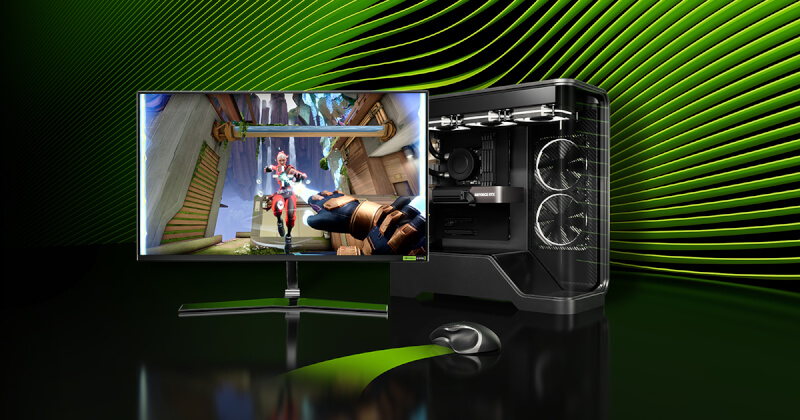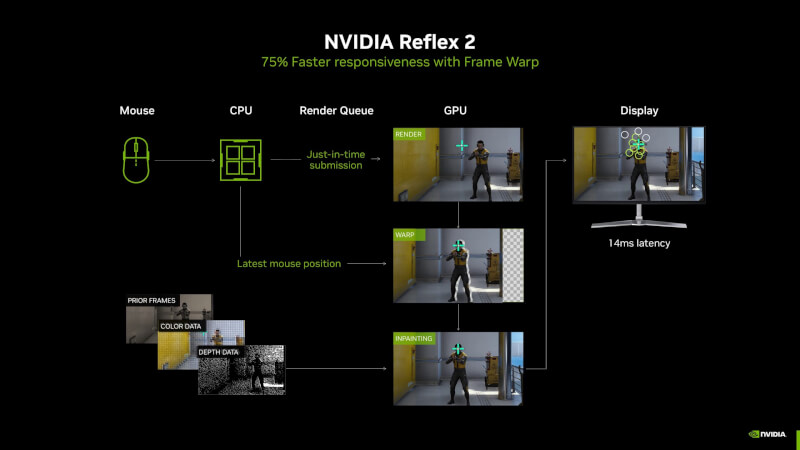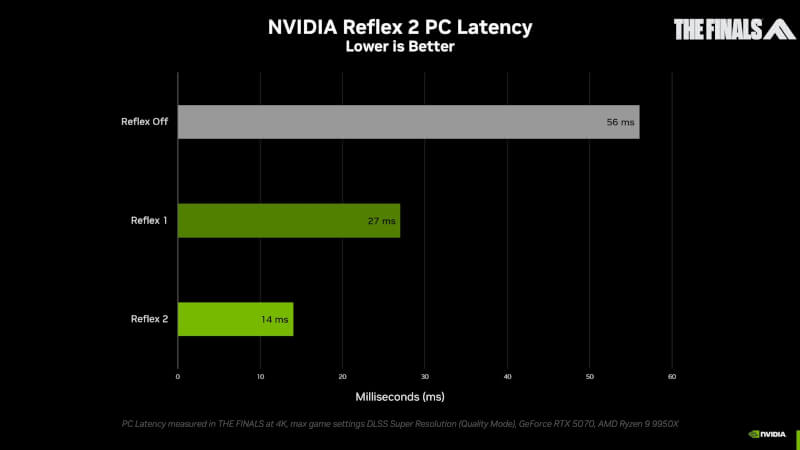Nvidia Reflex 2 reduces gaming latency

As announced at CES 2025, NVIDIA Reflex 2 will combine Reflex Low Latency Mode with a new Frame Warp technology that further reduces latency by updating the rendered game image based on the most recent mouse input before it is sent to the screen. This new technology is based on a study conducted by NVIDIA’s esports research team four years ago that showed that players could perform aiming tasks faster when frames were updated after rendering based on more recent mouse input. By adjusting or “warping” an existing frame to show the result of the action earlier, significant improvements in latency can be achieved.
This is exactly what NVIDIA Reflex 2's Frame Warp technology does. As a frame is rendered by the GPU, the CPU calculates the camera position for the next frame in the pipeline based on player input. Frame Warp samples the new camera position data from the CPU and warps the frame the GPU has rendered to the newer camera angle. This is done at the last minute to ensure that the latest input is displayed on the screen.

To avoid small “gaps” in the image that can occur when the new camera angle reveals a new part of the scene, NVIDIA has developed a latency-optimized predictive rendering algorithm. This algorithm uses camera data, color, and depth information from previous frames to accurately fill in these gaps. The result is that players see the rendered frame with the updated camera angle without gaps and with reduced latency for any action that caused the camera movement. All of this allows players to improve their aiming and tracking of enemies.
NVIDIA also demonstrated Reflex 2 with Frame Warp technology in Embark Studio's The Finals, which will be one of the first games to support the technology. Without Reflex, latency on an RTX 5070 GPU at 4K and maximum settings is 56ms, which reduces to 27ms with Reflex 1 and further to 14ms with Reflex 2.
NVIDIA Reflex 2 with Frame Warp technology also delivers significant improvements in CPU-constrained scenarios. In VALORANT, which will soon support the technology, an RTX 5090 can run the game at over 800 FPS. Here, latency is reduced to an average of under 3ms with Frame Warp, which is extremely impressive.

NVIDIA Reflex 2 will launch alongside GeForce RTX 50-series GPUs, with support for other RTX GPUs to follow later. More information about the newly announced technology can be found on NVIDIA's official website.
Latest graphics card
-
20 Margraphics card
-
13 Jangraphics card
ASRock B580 Steel Legend
-
07 Jangraphics card
ASUS showcases new AMD RX 9700 graphics cards
-
07 Jangraphics card
ASUS ready with large selection of RTX 50 graphics
-
07 Jangraphics card
Nvidia Reflex 2 reduces gaming latency
-
07 Jangraphics card
Nvidia launches DLSS 4 with the new RTX 50 series
-
07 Jangraphics card
Nvidia RTX 50 series is ready
-
07 Jangraphics card
Nvidia launches RTX 5090 at CES
Most read graphics card
Latest graphics card
-
20 Margraphics card
ASRock RX 9070 Steel Legend
-
13 Jangraphics card
ASRock B580 Steel Legend
-
07 Jangraphics card
ASUS showcases new AMD RX 9700 graphics cards
-
07 Jangraphics card
ASUS ready with large selection of RTX 50 graphics
-
07 Jangraphics card
Nvidia Reflex 2 reduces gaming latency
-
07 Jangraphics card
Nvidia launches DLSS 4 with the new RTX 50 series
-
07 Jangraphics card
Nvidia RTX 50 series is ready
-
07 Jangraphics card
Nvidia launches RTX 5090 at CES






